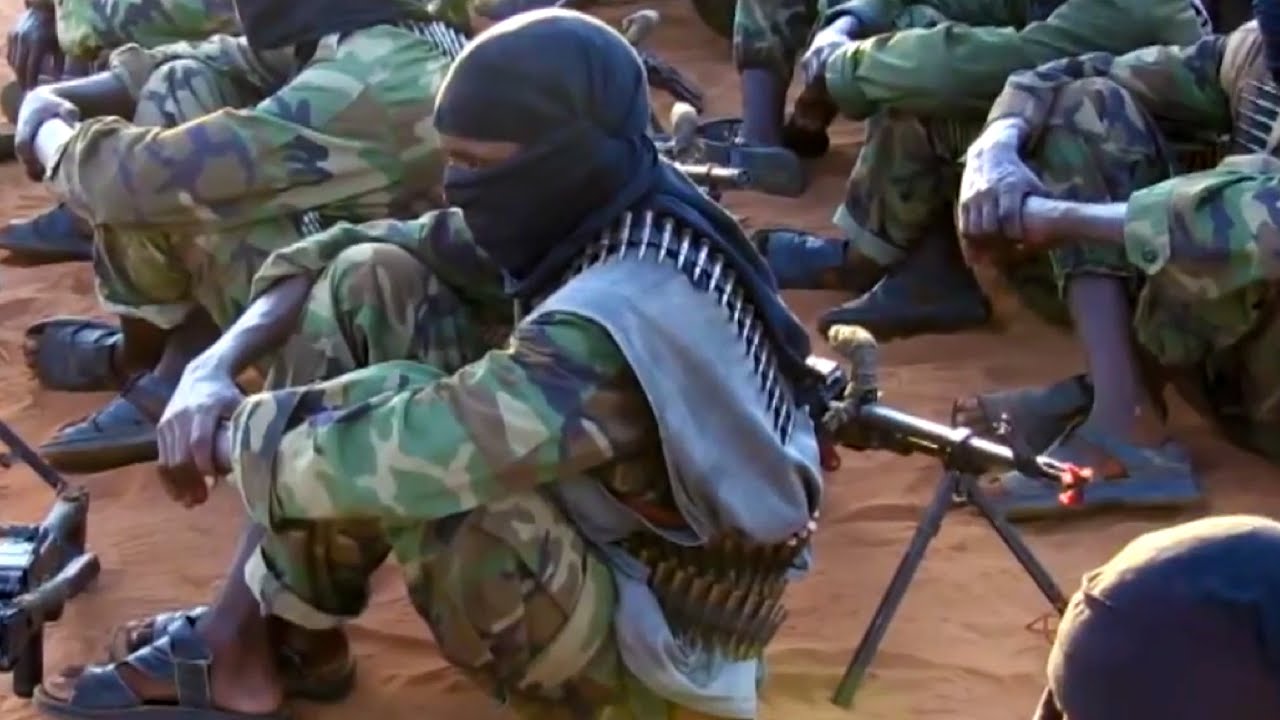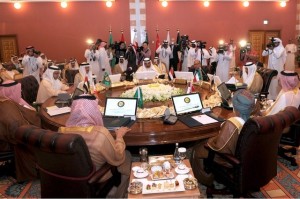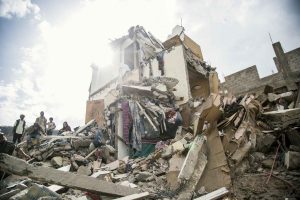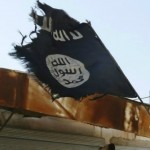by International Crisis Group
The devastating twin truck bombings in Somalia’s capital, Mogadishu on Saturday, October 14, 2017, mark the deadliest attack in that country since the current phase of its war began in early 2007. It almost certainly was perpetrated by the Islamist insurgent movement Al-Shabaab, though there has been no claim of responsibility. The death toll most likely will exceed 300, the vast majority ordinary Somalis, including dozens of children, going about their daily business. The immediate priority is to care for victims and deal with the aftermath. Somali President Mohamed Abdullahi Mohamed “Farmajo”, his government and its foreign partners should also redouble efforts to mend the divisions in Somali society and the chronic weaknesses in the security sector that make Al-Shabaab such a persistent threat.
The first and deadliest bomb exploded at the Zoobe Junction in Hodan – a bustling commercial mini-district close to the Red Crescent office and ministries of education and foreign affairs (the foreign minister was grazed by flying glass and debris). Whether the principal targets were the government buildings, as some reports suggest, or a nearby military training camp recently built by the Turkish government, is unclear. A second and smaller blast, that killed twelve, occurred at Ceel Qalow near Halane, the base of the African Union Mission to Somalia (AMISOM).
Al-Shabaab, an insurgent group fighting to overthrow the Somali government since 2007, is the only organisation with the capability, motive and experience to pull off anything on this scale. That it has neither denied nor claimed responsibility may reflect its reluctance to take responsibility for an attack that has provoked unprecedented anger and revulsion (it similarly avoided claiming a 2009 attack on a graduation ceremony in Mogadishu) and/or its hope that rumours and conspiracy theories – most peddling the idea of security forces’ collusion – continue to sow confusion.
Despite having suffered military setbacks since 2011 at the hands of AMISOM, Al-Shabaab remains resilient (see Crisis Group Commentary, “Somalia’s Al-Shabaab Down but Far from Out,” June 27, 2016). It controls tracts of rural south central Somalia and supply routes between towns, pursues a steady campaign of car bombings, assassinations and other attacks in Mogadishu and has targeted and in some cases overrun isolated AMISOM and Somali army bases.
According to multiple sources, the attack at Zoobe Junction involved an ageing TM (Bedford) truck – a model formerly used by the Somali army and ubiquitous in the country – converted for civilian use as a cargo transporter and packed with explosives. It reportedly originated from the Shabelle Valley and is thought to have passed several checkpoints manned by Somali soldiers on the Afgoye-Mogadishu road. The explosives may have been concealed by cargo, and thus harder to detect without thorough screening or specialised detectors (attempts to introduce sniffer dogs at checkpoints have run aground because many Somalis view the animal as unclean under Islamic law, though such dogs are now used at the airport). It is also plausible that soldiers were bribed to allow the truck through.
Although full responsibility for the horrific attacks lies with their perpetrators, a number of recent trends may have contributed to Al-Shabaab’s ability to mount an operation of this scale and should inform the response of President Farmajo’s government and its foreign partners.
Losing Territory around Mogadishu
Al-Shabaab recently recaptured several areas in the Shabelle Valley, including the town of Bariire, only 45km outside Mogadishu and on a major route to the capital. Those areas fell to the movement after government forces pulled out early this month, in protest that some had not received salaries for three months. Averting attacks in Mogadishu is ever harder when surrounding districts revert back to Al-Shabaab control or when communities, incensed by government corruption and dysfunction or by civilian deaths during counter-terrorism operations, provide the movement tacit backing. Al-Shabaab consistently plays on anger at officials’ graft – Somalia is ranked the world’s most corrupt country by Transparency International – to win support.
The government’s efforts to secure Mogadishu largely involve mopping up illicit weapons, reigning in clan militias and putting up barriers on arterial roads into the city. But these measures are not enough. Corrupt, unpaid soldiers and discontented clans on the city’s peripheries enable Al-Shabaab operatives to infiltrate. The organisation’s elite Amniyat (intelligence) cells for years have been active in the city, penetrating state security structures, gathering intelligence and assassinating government officials and informants.
Infighting among Security Forces
The Somali army and other branches of the security services have been under considerable recent strain. Rising factionalism and clan tensions triggered skirmishes in September, when a Somali army unit and elements of the newly-established Mogadishu Stabilisation Unit engaged in a firefight that left six soldiers dead. Such clashes often involve competition for control of turf, checkpoints and other sources of revenue. They undermine morale and cohesion in the security forces, erode the military’s effectiveness and make it more likely that troops or factions collude with the enemy. The defence and army chiefs recent resignations, as well as the army’s retreat from parts of the Shabelle Valley, may have been related to such problems.
Until the tragic attacks, Mogadishu’s overall security this year had seen gradual if modest improvements. Assassinations and car bombings have been less frequent and deadly than in past years (of which 2016 was the deadliest) and Somali security forces have foiled several attempted vehicle-borne improvised explosive devise attacks. Better training, vehicle checks and patrols on major urban roads have almost certainly helped. But the endemic wrangles between official security forces appear to have allowed insurgents an opening to mount a major attack.
Political Tensions
Mounting tension between Mogadishu and Somalia’s federal states has also impacted security. The rift between Saudi Arabia and the United Arab Emirates, on one hand, and Qatar on the other, has aggravated such friction. As the Saudis and Emiratis develop direct links with federal states and undermine their relations with the federal government, tensions have grown over which side of the Gulf dispute to back. This also diverts attention from security problems in Mogadishu.
Riyadh and Abu Dhabi also have stopped direct budgetary support to Somalia, affecting the federal state’s ability to pay soldiers, police and intelligence officials. Saudi Arabia in October agreed to release $50 million to the Somali government, but sources say this is a one-time donation, not a resumption of its previous budgetary support. So long as Mogadishu remains “neutral” – ie, refuses to explicitly back the Saudis and Emiratis in their dispute against Qatar – Riyadh is unlikely to resume its prior assistance. Yet, with Qatar and its ally Turkey also major donors, the Somali government is understandably reluctant to pick sides in this dispute between its partners.
Priorities for the Government
The next weeks will be crucial for President Farmajo’s government. Fury on the street at Al-Shabaab could shore up support for the government and provide momentum for efforts to overcome divisions in Somali society. But there is also a risk that the president’s opponents, especially those in the federal states, could attempt to capitalise on the crisis with the goal of ousting him and his government. Even in the weeks before the attacks, rumours of plans by regional governments to introduce a no-confidence vote in parliament were intensifying. The federal states’ formation of a caucus and issuance of a critical communiqué at the end of an 11 October meeting in Kismayo only deepened speculation. Such upheaval could easily play into the insurgents’ hands.
Of course, the government must cope with the aftermath of the attacks and ensure victims receive necessary support. But it also should work quickly to improve relations with federal states and address the constitutional questions that lie at the roots of much of the political infighting, especially those related to resource sharing and devolved powers. The government has invited the federal state presidents to discuss main points of disagreement, including the Gulf crisis, over the coming weeks. This is positive and ought to be supported.
Reforming and cleaning up the security sector is another imperative. Unless the Somali leadership prioritises such efforts, the significant external investment in that sector will fail. Present rates of corruption fuel insecurity. For its part, AMISOM has made significant inroads in reversing Al-Shabaab’s territorial control, but it is overstretched and struggles to fight a non-conventional war against a resilient insurgency that feeds off local conflicts and, frequently, the heavy-handed tactics of its enemies, whether African, Somali or U.S. forces. Somali forces’ inability to secure and govern areas taken, often with heavy losses, by AMISOM saps morale. Partly in an effort to force the government to prioritise security sector reform, some troop contributors now threaten to wind down operations in the next two years. While Somali forces must gradually assume more responsibility, a hasty AMISOM withdrawal would be disastrous, almost certainly ceding larger parts of the country, including main towns, to Al-Shabaab.
Political divisions – between the government and federal states and among clans – pose a grave obstacle to reforms. Redoubling efforts to address such divisions, including through clan-level reconciliation, are critical in themselves but also a prerequisite for security forces’ coherence and motivation. If not built on solid political foundations, training and arming units in the Somali forces could end up aggravating instability.
In this light, a bottom-up, national reconciliation process and political settlements between the government and federal member states, and among those federal states, should be a top priority. Somalia’s key partners, the European Union (EU), UK, U.S. and the African Union (AU) should continue to promote such efforts. In tandem, federal states, supported by Mogadishu, should launch grassroots initiatives to reconcile clans and make local governance more inclusive. Somalia’s Western partners could accompany this process by supporting state administrations to boost their role in intra- and inter-clan reconciliation and help reinforce local security forces.
Republished, with permission, from International Crisis Group. Photo: Al-Shabaab training camp.






Where have we heard this song before?
>Somalia’s key partners, the European Union (EU), UK, U.S. and the African Union (AU)
>Al-Shabaab, an insurgent group fighting to overthrow the Somali government since 2007
>The Somali government is weak and corrupt.
Afghanistan, perhaps? Yes, sort of.
In 2006 after civil strife the Council of Islamic Courts took control of Mogadishu, but were driven out by Ethiopia. Then the Courts morphed into Al-Shabab which has become an “insurgent force” against the weak, corrupt government installed by the US allies.Now, a bottom-up, national reconciliation process should be a top priority.
Good luck on that. It’s better to stop meddling, and get the US troops out of there. One was killed in May, and there may be more to come.